Nose Surgery in Cambodia
Search and Compare the Best Clinics and Doctors at the Lowest Prices for Nose Surgery in Cambodia

Find the best clinics for Nose Surgery in Cambodia
No clinics available
Poland offers the best prices Worldwide
Price: $ 101

- Home
- Cambodia
Compare Before & After Photos of _procedure_photos.phpNose Surgery
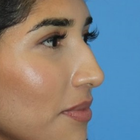
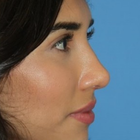
Full-side view
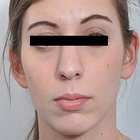

Front view
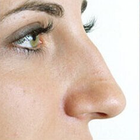
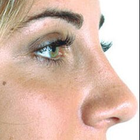
Full-side view
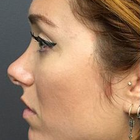
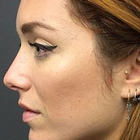
Full-side view
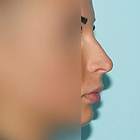
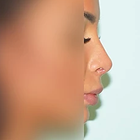
Full-side view

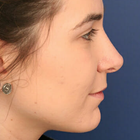
Full-side view
WHY US?
At Medijump, we're making medical easy. You can search, compare, discuss, and book your medical all in one place. We open the door to the best medical providers worldwide, saving you time and energy along the way, and it's all for FREE, no hidden fees, and no price markups guaranteed. So what are you waiting for?

Free

Best Price

Widest Selection

Risk-Free
What you need to know about Nose Surgery in Cambodia
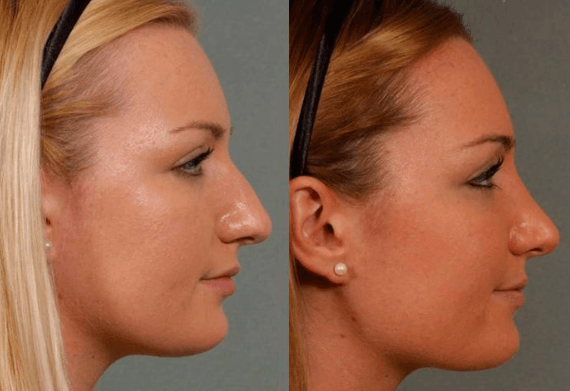
Commonly referred to as a Rhinoplasty, it is the medical term for reshaping of the nose or corrective surgery of the nose. It is one of the most common facial plastic surgeries (Facelift) procedures performed. Nose surgery can be performed to change the consequence of genetics, birth defect or nasal injury. It can be performed to enhance the appearance and/or to improve nasal breathing.
Surgery can be performed to correct nasal humps, the curvature of nose-bridge, nose tip irregularities, and asymmetry in the nostrils. The nasal appearance can be altered in various ways using intra-nasal chisels. Nose surgery procedures generally fall under three types: open rhinoplasty, closed rhinoplasty, and tip rhinoplasty. Rhinoplasty is normally performed under general anesthesia and will not leave any visible scars on the nose.
What does a Nose Surgery Procedure Involve?
Nose surgery is an individualized surgery. Before the surgery, you will need to discuss important factors with your surgeon to determine if it is suitable for you. Your surgeon will review your medical history, including your previous surgeries, medical conditions, and any medications you are taking. You will need to have a complete physical examination, such as blood tests. Your surgeon will also consider your other facial features, the skin on your nose, and what you would like to change or correct. Then, your surgeon will develop a customized plan for you. Two weeks before and after surgery, avoid any medications that contain aspirin or ibuprofen, such as Advil and Motrin IB because these medications can increase bleeding. You will need to also stop taking herbal remedies and over-the-counter supplements. If you are an active smoker, stop smoking because smoking can slow your healing process and increase the risk of getting an infection.
During the actual surgery, you will be given either local anesthesia or general anesthesia. The type of anesthesia depends on how complex the surgery is and what the surgeon would prefer to use. Then, the surgery will start by making incisions inside your nose or at the base of your nose between your nostrils. Your surgeon will reshape the inner bone and cartilage underneath your skin to make a more pleasing appearance.
There are several ways to change the shape of your nasal bones or cartilage, depending on your nose’s structure and how much needs to be removed or added. If only small changes are required, your surgeon may use cartilage taken from deeper inside your nose or your ear. However, for a much larger change, your surgeon may use cartilage from your rib, implants, or bone from other parts of your body. When the changes are finished, your surgeon will place the nose’s skin and tissue back. The incisions will be closed by stitches.
How Long Should I Stay in Cambodia for a Nose Surgery Procedure?
If everything goes well, you can go back to your hotel on the same day once the effects of anesthesia wear off. However, you will need to stay in a recovery room for a few hours so the staff can monitor you. Some people may need to stay in hospital overnight. After you are discharged from the hospital, you will need to stay in Cambodia for at least 10 to 14 days for initial recovery, follow-up checkups, and for the stitches to be removed.
What's the Recovery Time for Nose Surgery Procedures in Cambodia?
The recovery period for nose surgery can be different from person to person. In general, 2 to 3 weeks is needed until you can get back to your full normal routine and 3 to 6 weeks until you can do any strenuous activity. However, you should be able to go back to work within a week, except if your job requires strenuous physical activity. You will feel gradually better each day in the first week. You will experience swelling, which can take six months to subside. The only people who will notice the swelling is you and your surgeon. Your final nose shape will be apparent after it is completely healed.
What sort of Aftercare is Required for Nose Surgery Procedures in Cambodia?
After the surgery, you may need to wear a nasal splint for the first week. The splint is used to protect and support your nose. Your nose may be congested due to swelling or from the nasal splint. You need to rest in bed with your head raised higher than your chest to reduce bleeding and swelling. For a few days after the surgery, you may also experience slight bleeding and drainage of mucus. Your surgeon may place a “drip pad” under your nose to absorb drainage.
Your surgeon may ask you to avoid strenuous activity, take baths instead of showers, avoid blowing your nose, eat high-fiber foods to avoid constipation, not to do any facial expressions (smiling or laughing), not wearing pull clothing and wear button-downs instead.
For at least several weeks after the surgery, do not rest eyeglasses or sunglasses on your nose to prevent pressure. You should also wear SPF 30 sunscreen when you are outside because too much sun can cause permanent irregular discoloration to your nose. Do not put anything such as ice or cold packs on your nose even though it is swelling as the swelling will go away faster by limiting your dietary sodium.
What's the Success Rate of Nose Surgery Procedures in Cambodia?
Nose surgery is known to have around 80% to 90% success rate. Nevertheless, just like any other surgery, it still has possible risks and complications. These risks are bleeding, infection, numbness, permanent nerve damage, and an adverse reaction to the anesthesia. You should call your surgeon immediately if you suspect any of the symptoms. Other possible risks are difficulty breathing through your nose, uneven-looking nose, persisting pain, swelling, and discoloration, scarring, septal perforation, and the need for a second or third surgery.
For an in-depth analysis of the closed rhinoplasty procedure with before and after images, watch this short video.
Are there Alternatives to Nose Surgery Procedures in Cambodia?
If you do not want to undergo surgery, or if it is not suitable for you, you can get filler injections, such as Botox, Juvaderm, and Restylane. They can change the shape of your nose and only require a short visit to the doctor. This method is not painful and needs no incisions or stitches.
Whilst the information presented here has been accurately sourced and verified by a medical professional for its accuracy, it is still advised to consult with your doctor before pursuing a medical treatment at one of the listed medical providers
No Time?
Tell us what you're looking for and we'll reachout to the top clinics all at once
Enquire Now

Popular Procedures in Cambodia
Prices Start From $404

Prices Start From $111

Prices Start From $70

Prices Start From $220

Prices Start From $1,945

Prices Start From $192

Prices Start From $500

Recommended Medical Centers in Cambodia for procedures similar to Nose Surgery

- Interpreter services
- Translation service
- Religious facilities
- Medical records transfer
- Medical travel insurance
- Health insurance coordination
- TV in the room
- Safe in the room
- Phone in the room
- Private rooms for patients available

- Interpreter services
- Translation service
- Religious facilities
- Medical records transfer
- Medical travel insurance
- Health insurance coordination
- TV in the room
- Safe in the room
- Phone in the room
- Private rooms for patients available

- Interpreter services
- Translation service
- Religious facilities
- Medical records transfer
- Medical travel insurance
- Health insurance coordination
- TV in the room
- Safe in the room
- Phone in the room
- Private rooms for patients available

- Interpreter services
- Translation service
- Religious facilities
- Medical records transfer
- Medical travel insurance
- Health insurance coordination
- TV in the room
- Safe in the room
- Phone in the room
- Private rooms for patients available

- Interpreter services
- Translation service
- Religious facilities
- Medical records transfer
- Medical travel insurance
- Health insurance coordination
- TV in the room
- Safe in the room
- Phone in the room
- Private rooms for patients available

- Interpreter services
- Translation service
- Religious facilities
- Medical records transfer
- Medical travel insurance
- Health insurance coordination
- TV in the room
- Safe in the room
- Phone in the room
- Private rooms for patients available

- Interpreter services
- Translation service
- Religious facilities
- Medical records transfer
- Medical travel insurance
- Health insurance coordination
- TV in the room
- Safe in the room
- Phone in the room
- Private rooms for patients available

- Interpreter services
- Translation service
- Religious facilities
- Medical records transfer
- Medical travel insurance
- Health insurance coordination
- TV in the room
- Safe in the room
- Phone in the room
- Private rooms for patients available
Nose Surgery in and around Cambodia
Introduction
Perched in the heart of Southeast Asia, nestled between Thailand and Vietnam, lies Cambodia — a dynamic blend of ancient and contemporary worlds that makes for an intriguing adventure. Dominating its list of attractions is the globally-renowned Angkor Wat, embroidered by lush jungles.
It is the soul of Cambodia — its vibrant culture, warm inhabitants, profound historical heritage, stunning coastlines, delightful cuisine, and spirited nightlife — that gives this nation its unique charm. Each element, individually fascinating and collectively harmonious, weaves a magical tapestry that is Cambodia.
Over recent years, Cambodia has strategically bolstered its healthcare infrastructure, aiming to appeal to a global patient community. In this endeavor, the country has witnessed several of its hospitals forging partnerships with institutions from close-by countries, with Thailand being a significant partner.
These strategic alliances have been key in establishing state-of-the-art healthcare facilities across Cambodia. These healthcare establishments strive to cater to a diverse array of medical needs, ensuring the delivery of world-class, professional care that meets, if not surpasses, internationally accepted standards.
Cambodia is relentlessly driving efforts to enhance its healthcare sector, with one main goal - to give patients access to top-notch medical care at costs significantly lower than those in other Southeast Asian nations, Singapore being a prime example.
This strategic approach is geared towards attracting patients from regions like Laos, Taiwan, and China. The essence of this approach is to establish Cambodia as a major healthcare destination that offers high-quality medical services, all within a budget-friendly framework that doesn’t strain patients' finances.
Popular Cities and Regions in Cambodia
Phnom Penh is the capital of Cambodia, as well as the main medical tourism destination in the country. Once the ‘Pearl of Asia,’ this bustling city is now filled with bustling bars, historical architecture, vibrant café culture, a world-class food scene, and a glimmering Royal Palace.
Tourists venturing into Cambodia are invited to traverse the myriad attractions this enchanting nation has to offer. A must-visit is the National Museum of Cambodia which houses the country's extensive cultural history and art. For those who seek a deeper insight into Cambodia's past, the Tuol Sleng Genocide Museum provides a poignant yet important glimpse into the darker chapters of its history. In addition, the Royal Palace stands as a testament to Cambodia's architectural grandeur, drawing admiration from visitors across the globe. Another gem to explore in Phnom Penh is the Silver Pagoda, a unique blend of tranquility and exquisite craftsmanship, making for an unforgettable experience.
Moving beyond the capital city of Phnom Penh, Siem Reap emerges as another popular destination in the Cambodian travel circuit. This city, bustling with energy and soaked in history, captures the diverse ethos of Cambodia in its vibrant art, architecture, and local life. Inclusion of Siem Reap in any Cambodian itinerary lends an additional layer of cultural depth, making the exploration of this intriguing nation an even more enticing proposition. As such, whether it's diving into the past or experiencing the dynamic present, Cambodia offers a varied palette of experiences to delve into.
It’s where the fascinating, UNESCO-listed Angkor Wat is located. Aside from Angkor Wat, Siem Reap also offers other attractions, such as the Angkor Silk Farm, Wat Bo, War Museum, and Senteurs d’Angkor Botanic Garden. Those who want to relax on a beach should visit Sihanoukville. It was once a quiet beach town, but now it has become a modern up-and-coming holiday destination.
Transport in Cambodia
Phnom Penh International Airport stands as the largest and most bustling airport in Cambodia. Acting as a critical transportation nexus, it facilitates both domestic and international air travel. The airport offers numerous flight connections to various cities across Asia, making it a convenient choice for international tourists. Besides being a gateway into Cambodia, it also serves as a starting point for internal travel.
For tourists looking to cover various parts within the country swiftly, opting for domestic flights is a time-efficient choice. These flights are well-linked, providing easy access to different parts of this captivating country. Despite being the fastest mode of travel, they maintain reasonable fares, ensuring that the journey is equally enjoyable as the destination.
As one navigates within the cities, there is a disparity between the modes of transportation used for intra-city and inter-city travel. While trains and buses are the preferred options for traveling between different cities due to their affordability, city-based transportation adopts a different palette altogether. For daily city commutes and quick visits to local sights, taxis, tuk-tuks, and motorbikes are the most viable options. They're not only readily available but also allow for an intimate view of Cambodian city life. This dynamic and efficient transportation network significantly enhances the convenience of exploring Cambodia's stunning expanse.
Visas in Cambodia
- Citizens of 9 countries, including Laos and Singapore, can visit and stay in Cambodia for up to 30 days without a visa.
- Citizens of most other countries can apply for a visa on arrival or eVisa.
- All visitors must have a passport valid for at least six months beyond their intended date of departure from Cambodia.
Visa on arrival
- A visa on arrival can be obtained at any of the following Cambodian airports: Phnom Penh International Airport (PNH), Siem Reap International Airport (REP), and Sihanoukville International Airport (KOS).
- The visa on arrival fee is USD 30.
- Visitors who obtain a visa on arrival must have a valid passport and two passport-size photos.
eVisa
- An eVisa can be obtained online at the website of the Cambodian government.
- The eVisa fee is USD 35.
- Visitors who obtain an eVisa must have a valid passport and a digital photo.
Weather in Cambodia
Cambodia is blessed with a warm climate throughout the year, making it a destination for all seasons with temperatures seldom falling below 20°C. Cambodian weather is generally categorized into two primary seasons: wet and dry. The wet season, spanning from May to October, is marked by episodic showers during daytime hours, adding to the country's tropical charm.
The dry season, commencing from November and extending up to April, is typified by agreeable and sunny weather conditions, making it an ideal time for travel and exploration. However, it is worth noting that during the peak of the dry season, specifically in March, temperatures can climb up to a sweltering 35°C. Despite the somewhat extreme conditions, the resplendent beauty of the country remains undeterred, with Cambodia promising a riveting experience regardless of the season.
Additional Info
- Local Currency: Cambodian riel (KHR) is the official currency and 1 USD converts to approx. 4,161.63 KHR. However, USD is widely accepted.
- Money & Payments: ATMs are widely available and sometimes dispense US dollars. Credit cards are accepted in major cities. Tipping is expected and appreciated.
- Local Language: The official and mainly spoken language is Khmer. Some people also speak Vietnamese and Chinese. English is mostly used in tourist areas and major cities.
- Local Culture and Religion: About 97% of the population follows Theravada Buddhism. Islam, Christianity, and tribal animism make up the remaining 3%.
- Public Holidays: Victory over Genocide Day, Khmer New Year, King’s Birthday, Day of Remembrance, and Independence Day are some of the public holidays celebrated in Cambodia.
Popular Searches
- Plastic Surgery in Thailand
- Dental Implants in Thailand
- Hair Transplant in Thailand
- Breast Augmentation Thailand
- Gastric Sleeve in Thailand
- Gender Reassignment Surgery in Thailand
- Laser Hair Removal in Bangkok
- Botox in Bangkok
- Dermatology in Bangkok
- Breast Augmentation in Bangkok
- Coolsculpting in Bangkok
- Veneers in Turkey
- Hair Transplant in Turkey
- Rhinoplasty in Turkey
- Stem Cell Therapy in Mexico
- Rhinoplasty in Mexico
- Liposuction in Mexico
- Coolsculpting in Tijuana
- Rhinoplasty in Korea
- Scar Removal in Korea
- Gastric Sleeve in Turkey
- Bone Marrow Transplant in India
- Invisalign in Malaysia
- Plastic Surgery in the Dominican Republic
- Tummy Tuck in the Dominican Republic
- Plastic and Cosmetic Surgery in Poland
- Rhinoplasty in Poland
- Hair Implant in Poland
- Dental Implants in Poland
- IVF in Turkey